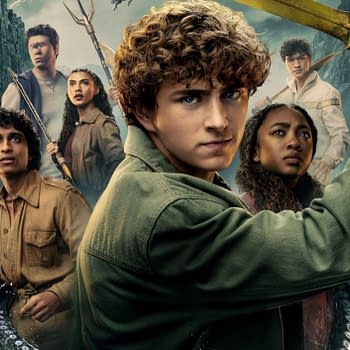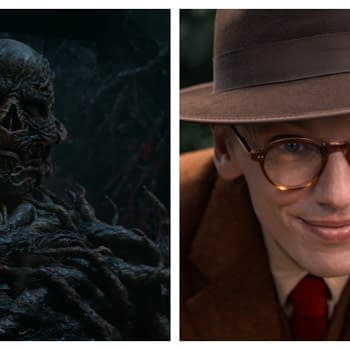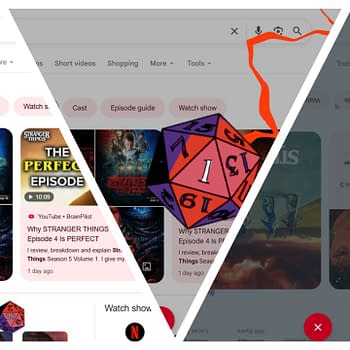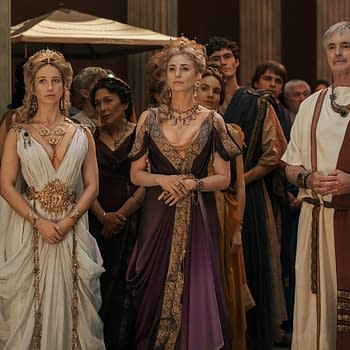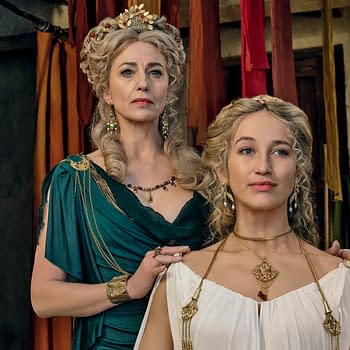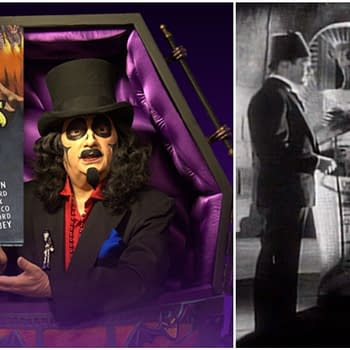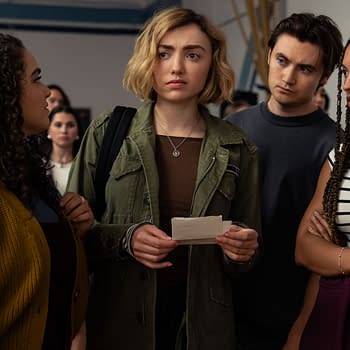Posted in: TV | Tagged: battlestar galactica, star trek, The Orville
Star Trek Designer Reflects on Battlestar Galactica, The Orville, More
During our interview, Star Trek designer Doug Drexler reflects on his time working on SYFY's Battlestar Galactica and Fox/Hulu's The Orville.
Article Summary
- Doug Drexler shares insights from his work on Star Trek, Battlestar Galactica, and The Orville.
- Drexler discusses reimagining Battlestar Galactica’s visuals and collaborating with Ronald D Moore.
- He recalls standout moments like the explosive Pegasus scene from Battlestar Galactica: Razor.
- Drexler explains creative shifts in Star Trek and Seth MacFarlane’s passion for The Orville.
Designer Doug Drexler has one of the most accomplished careers in Hollywood, an empire primarily built on Star Trek, but it's hard to overlook his lingering impact that carried over into other science fiction franchises, like SYFY's reimagining of Battlestar Galactica and the Trek-inspired Fox/Hulu series The Orville, tapping his expertise in makeup and visual effects. Both featured plenty of Star Trek alum with Ronald D Moore as the guiding force of the newer incarnation of the Glen A. Larson-created series, and Enterprise's Brannon Braga, who's co-executive producing The Orville with creator Seth MacFarlane. While promoting his documentary Trek Star: The Doug Drexler Documentary, he's working with Jason E. Smith on Kickstarter, Drexler spoke with Bleeding Cool about reuniting with Moore for Battlestar, why the TV movie Razor stood out most, MacFarlane's love for Trek, and why Paramount decided to shift creatively on certain Star Trek shows like Discovery and Strange New Worlds
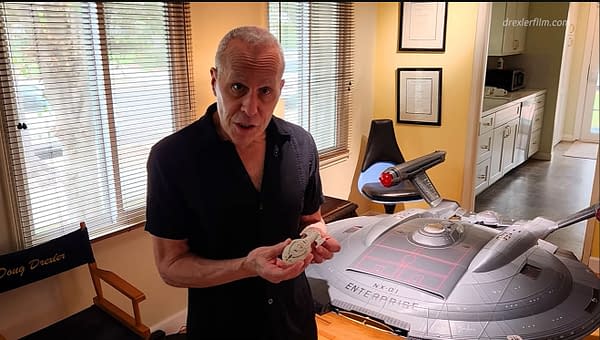
Star Trek Designer Doug Drexler Reflects on His Legacy on Battlestar Galactica and The Orville
You followed Ronald D Moore to Battlestar Galactica. Did it feel like a fresh canvas or a fresher canvas, because I know the Glen A Larson series had that distinct look? How did you want to visually distinguish that newer look, making it more than just a fresh coat of paint?
Yeah, it's way more than a fresh coat of paint, I'll tell you that. It is one of the greatest science fiction shows ever, and I'm always amazed at how many Star Trek fans haven't looked at it. I know it can be grim sometimes, and the new Battlestar is much more related to Star Trek, except for the basic concept. Doing the visual effects with Gary [Hutzel] on that was really…when he did the first season and the miniseries, I remember looking at that thinking, "Wow!" Since space stuff was starting to get creaky. You'd see a ship fly from left to right, and Gary breathed new life into the look he was going for.
Since the DP, Steve McNutt, shot the interiors like a documentary, it was like someone had a camera in the set and the camera's motivated by something that happened over here, the camera swings over here, then looks, and zooms in. We see it closer, it's more like a human being. The Star Trek camera is the "Eye of God." When [Ron] asked and called me to go on that, I was thrilled, and the beauty of Gary is that he knew me; he knew that this was new for me. I picked it up pretty quickly, and we did some amazing Battlestar episodes, absolutely. I look at them today and they're still amazing.
Were there particular episodes for Battlestar that stood out to you that you're most proud of?
[Laughs] Well, what really stands out to me was a scene in it. I'm not saying the entire episode. Maybe it was Razor (2007), where they bring back the Pegasus and the Cylons attack the Scorpion shipyard with the Pegasus there. We just kicked ass! It is such an amazing sequence, and it still holds up even today. We had Kyle Toucher, who was the best CG camera guy for action that I've ever seen. Sean Jackson was like the god of hellfire, and his specialty was fire and explosions.
[Sean] was crazy, and the rest of us were building models, lighting, and doing shots too. If it came to the hard action shot, like it's flying through the shipyard, give it to Kyle, who's the man for the job. I remember in the script, it was described as something like "A dot of light moves towards the shipyard. There's a blinding, fat lash and the shipyard is gone." Kyle and I read that together, and I remember we looked at each other and said, "Oh my God! This is our chance to do Pearl Harbor in space."
Gary came in, and we were all excited, enthusiastic, describing possible scenes and things. Gary said, "Kyle, go set up the shots, and I'll sell it to Ron Moore." He did twice as many shots. He's so incredibly fast, and it was incredible, cut it together. Ron Moore came in, took a look and said, "Do it." See?! That was the beauty of Battlestar. On Star Trek, It's exactly what's on the page. You change a word, even if it's Patrick Stewart (doing it), Rick Berman's probably going to come down to set.
Having worked on both the Star Trek and Battlestar franchises, I must discuss the third pillar: The Orville. How do you compare those two to Seth MacFarlane?
I know how Seth MacFarlane loves Star Trek. When you can go on YouTube and see his fan film where he's a teenager with his friends sitting in a garage playing Star Trek. He has a genuine caring and love for it. I admire that, and the other thing is when I was done with Battlestar and Paramount was starting at Discovery, if you're an "original gangster," they don't want you, and the reason is they want freedom, and I understand that. They know that if you get me or [designer] Mike Okuda, we're going to push back on some things, saying, "Well, it really wouldn't."
According to us, the [Star Trek] Encyclopedia is the truth. You can't change it. It's immune. It's history. Star Trek is a historical drama. I don't think I could see how you can improve some things. If I oversaw Strange New Worlds, it would have some beautiful set design. That isn't the way I do the bridge, and I approach it totally differently. I understand why an art director says, "I have a chance to build a science fiction bridge." Not even thinking it's Star Trek, it's a "science fiction bridge." I want to do what I think is right. I get that, but Star Trek deserves more than that. Note: Drexler was tapped to contribute to Star Trek: Picard.
For more information on Drexler, you can visit the Kickstarter page for the documentary and learn about contributing.






